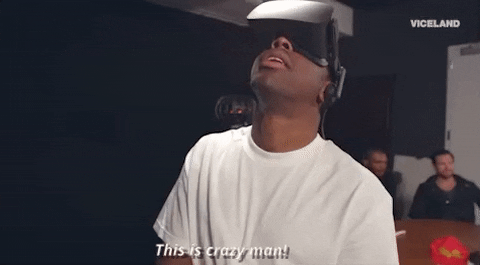
ecommerce ai
3 strategies for eCommerce personalization in 2021

Retailers always have one question in mind, “How do we help you find what you need?” Allowing your customers to find the exact, right shoes or the perfect sofa for their living room in as few steps as possible is the goal of many retailers. By removing the “friction” of many clicks and endless decision loops, customers can enjoy the experience of browsing and form a better connection and affinity for a brand or retailer. How to do this falls under the rubric of personalization. In this post we look at three personalization strategies and how they might help you improve sales and achieve your sustainability goals. Not a mutually exclusive goal!
Let's Get Trending
Analytics can provide amazing and hidden insight into your customer’s behavior. Companies like Netflix value their recommendation engines as high as $1 billion per year, so it is no surprise that these systems have become a classic example of how data science can provide business value through data science.
Most people think of Tableau when they hear analytics, but Tableau and similar software are really data visualization tools. It is the tool that helps you see the patterns in data. The real excitement is in the pattern discovery, the unseen analytics. A data scientist or other trained statistician is usually the person who gathers the data, cleans, and sorts the data to try and find something interesting. They may have a theory (using deductive reasoning) and want to test that theory, or she may just dive into the data using inductive reasoning.

How might this work in eCommerce? You might believe that buyers of ecologically friendly clothes are Millenials. You can then look to the data to see if that theory is correct or you might start with a data set of all the features of the products sold and ask an algorithm to sort them into groups. By investigating the two groups you may find that one group spends more money on sustainable goods and skew towards a Baby-Boomer cohort.
Predictions about your customer’s desires are informed by the data of our customer’s interactions but the insight from that data is generated by creative scientists. Yes, creativity in data science is at the heart of new insight and data scientists are using machine learning tools and models to help bring their investigations to customers. The predictions you need should not be limited to the “best selling” product or the most commonly viewed category or even the most purchased size. These all have some value but demand your analytics team to move beyond these baby steps to create insight for your corporate values. That might be “what more can we sell” but it could also be taking steps to be careful in what is being bought. At Delvify, we believe insight from the products and customers can be harnessed to provide a road map for retailers to align their buyers and designers with sustainable products and we search for ways to bring this to reality.
all about me
According to the Ascend2 research report, 86% of the marketing professionals surveyed, consider the effectiveness of an AI-powered hyper-personalization strategy to be changing for the better. We have moved beyond the AI hype and are now deep in the practical use case development stage.
Hyper-personalization can be as simple as an advertisement in a grocery store sent to your mobile phone based on where you are standing. AI has now been harnessed to provide outstanding visual experiences for your customers. Through increased sensory experiences, we can get closer to aspirational experiences. Have a 360-degree rotation of a product image so customers can see your product at every angle or even utilize VR or AR to make the excitement flow.

AI is the tool that takes the visual features of an object and matches those features to other products through their own software. How does this help your business need then? By using Delvify’s Visual Search technology, if your customers are taking pictures of products that are similar or looking at a range of products onsite, the Visual AI can extract the features such as color and composition and collate this information on a dashboard. This dramatically shortens the design cycle by providing real-time feedback on trending features of products and not just the product categories. By doing so, you reduce the design to sale time cycle and reduce the wastage of unsaleable stock.
It's a match!
Search is king in eCommerce and all our previous blogs (and this one!) have emphasized that your customers are looking for something specific when they come to your site, so give it to them! Your company may be trying to optimize everything from images to videos to SEO using manual procedures. Shopify finds that on average, users who complete a search are 1.8x more likely to convert and that search while used only by about 10% of the customers generates upwards of 40% of a site’s revenue but be wary, search can have a high error rate.
How many searches generate zero results? eCommerce platforms should aim to have no zero results in 2021 when consumers are searching for an item. This is possible because search using Natural Language Processing and Visual AI that is employed by Delvify always generates a result. Why? Because AI works by harnessing statistics and even if the probability is low, a product will be delivered.

How can this help sustainability? Natural Language Processing can be harnessed to help customers find the items that match their feelings and not just keywords, bringing them to green, enviro-friendly, eco, non-harmful, nice to the earth products.
Bonus: Technology Bite
Research at institutions like Caltech have shown that overt attentional shifts are manifested by saccades (eye motions), which happens every 200ms or so. Most software cannot operate at that speed due to the time to send information between a server and a browser. The latency often exceeds 200ms.
The post-decision motor response to a stimulus by pressing a button takes about 250-300ms so what do you do when your software response exceeds that? The answer is as simple as the whirling wheel on your mobile phone. You can enforce eye fixation at the center of the display so as to prevent overt attentional shift by present and engaging icons or GIFS to avoid disappointment.
Get in touch with our team today if you would like to hear more about how eCommerce personalization can benefit your brand!
Subscribe for latest updates
Want to keep updated on the latest happenings in AI and Programmatic? Subscribe to our updates and stay in the loop

